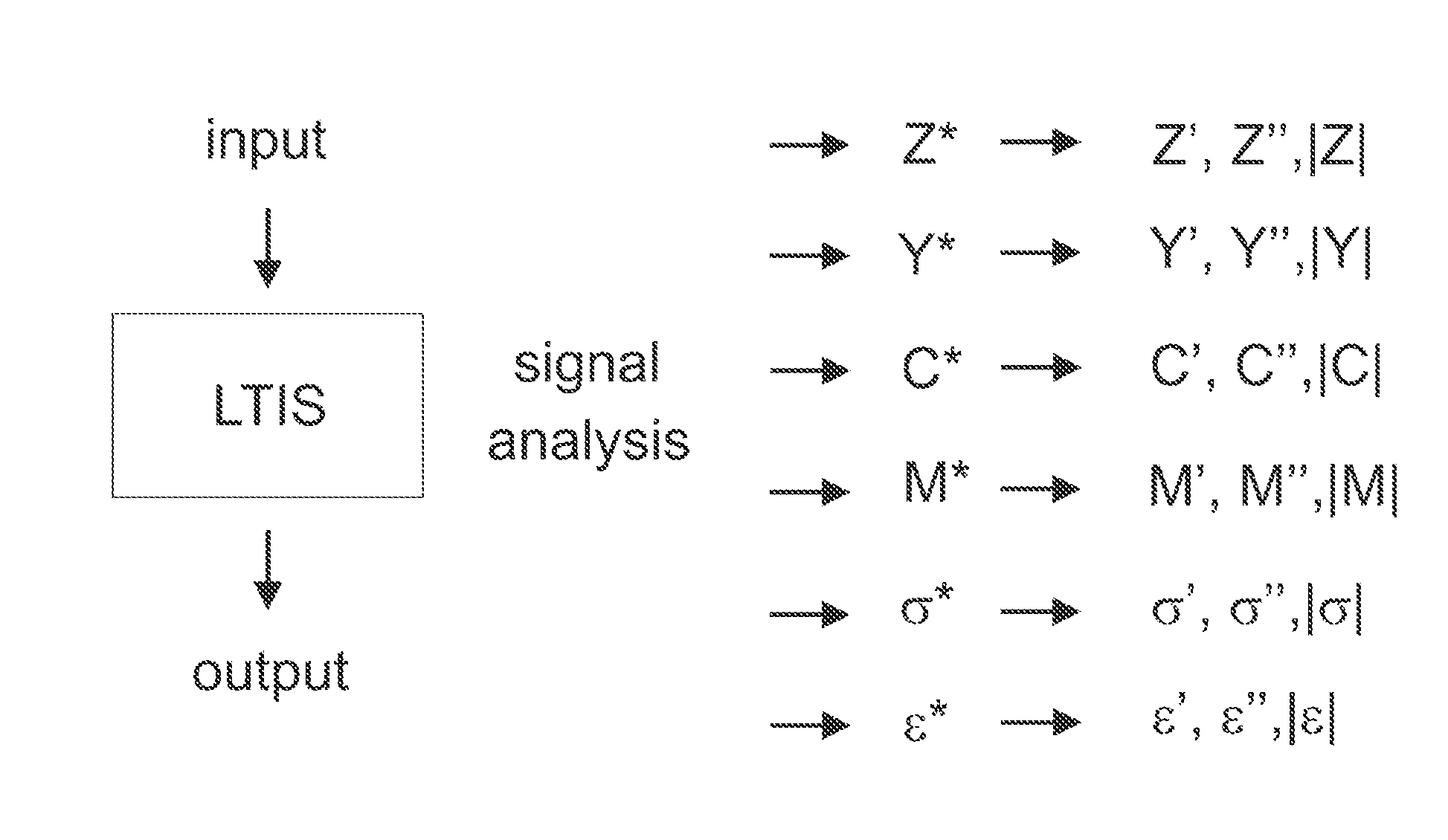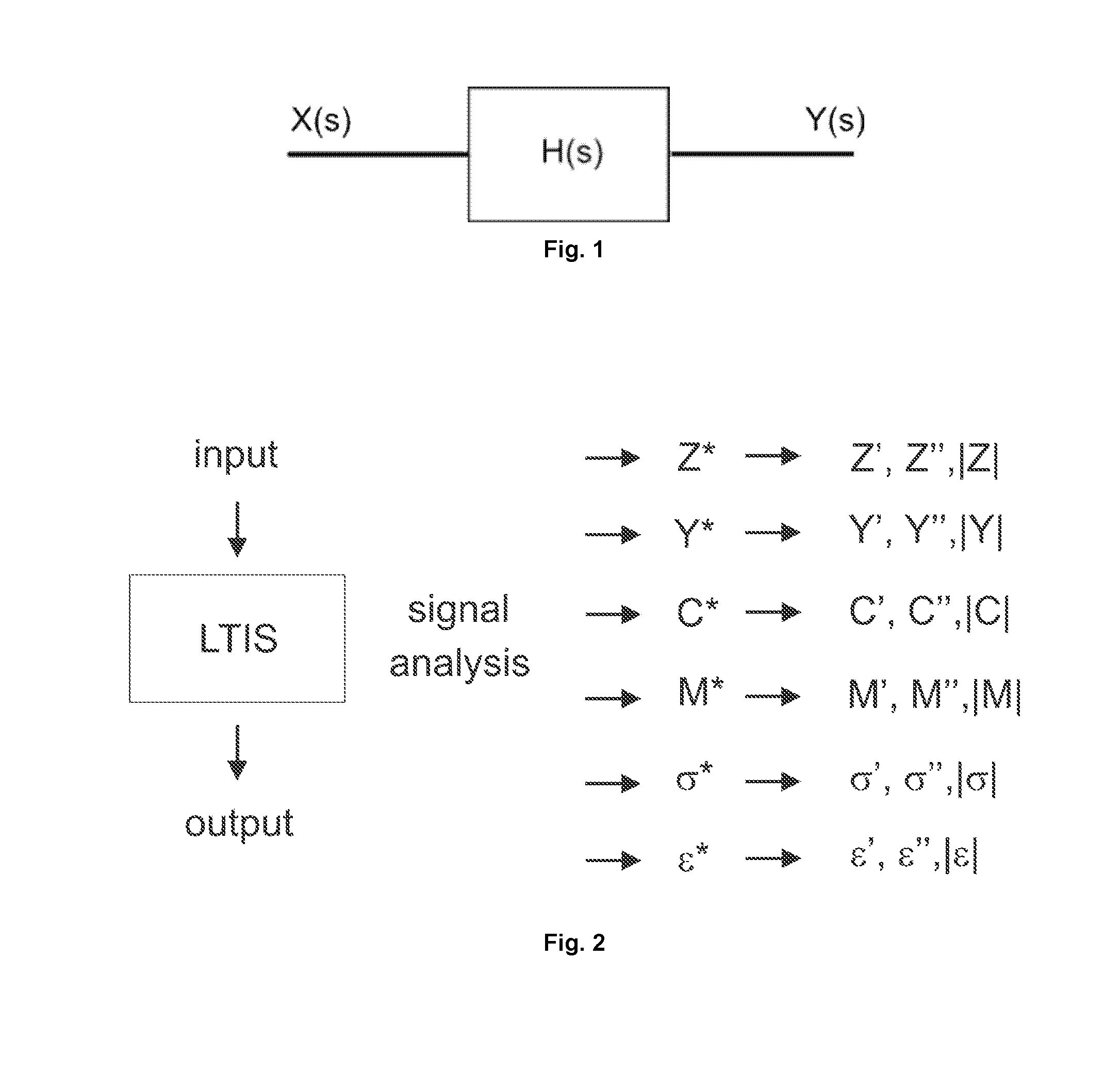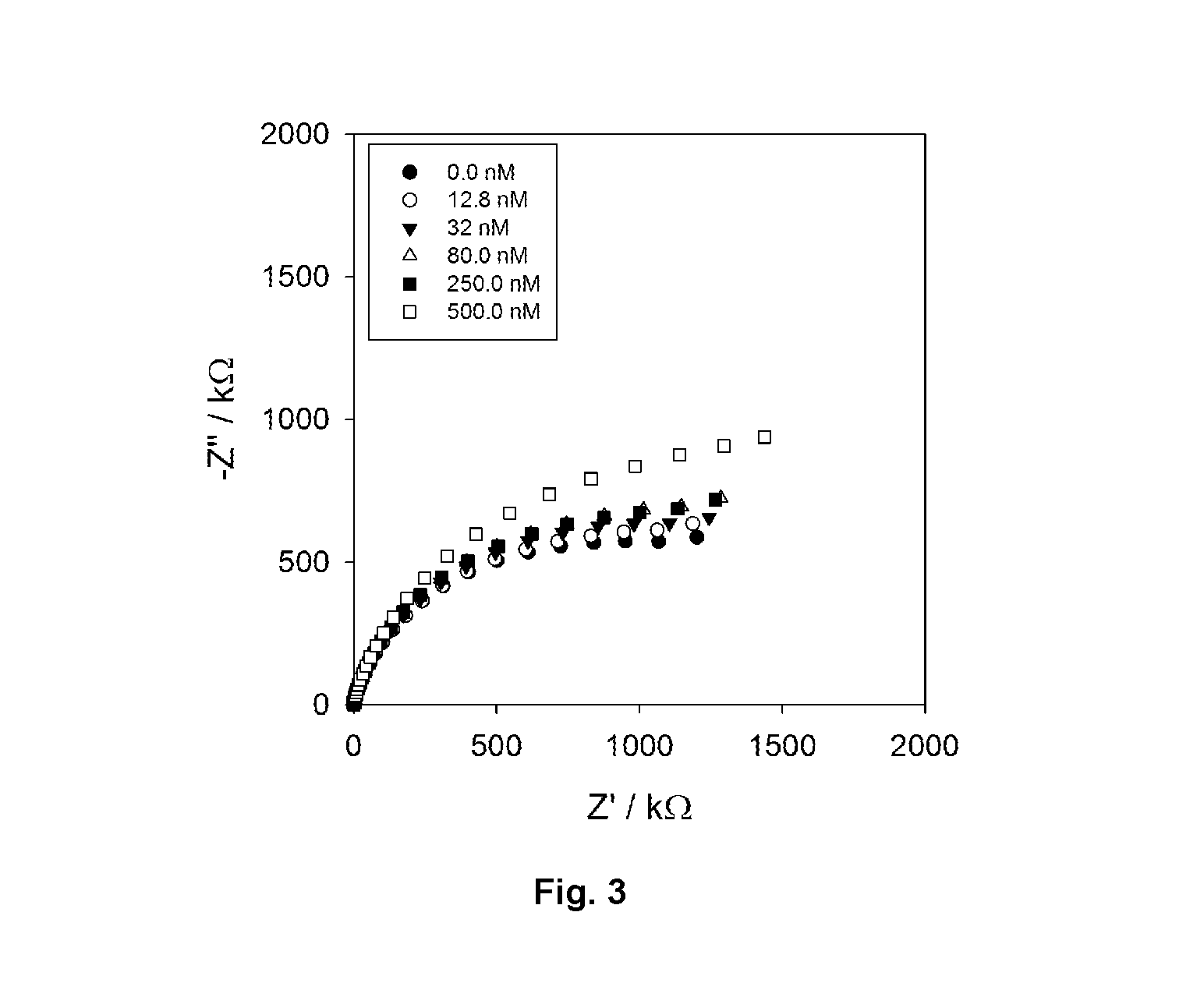Electrochemical detection method
a detection method and electrochemical technology, applied in the field of electrochemical detection methods, can solve the problems of difficult method, potential perturbation of labeling protocols, and difficulty in generating viable protein microarrays, and achieve the effect of linear and/or dynamic range extension of assays
- Summary
- Abstract
- Description
- Claims
- Application Information
AI Technical Summary
Benefits of technology
Problems solved by technology
Method used
Image
Examples
example 1
Immunoassay Applications: Biofunctionalized Transducer Surfaces and Label Free Detection of Disease Markers
Traditional Impedance Spectroscopy Approach Versus Immittance Function Approach
[0128]As mentioned above, the sensitive detection of clinically important target molecules can be achieved through the immobilization of appropriate receptors on an electrode surface and the subsequent mapping out of electronic or electrochemical characteristics of this interface as a function of target binding. The present inventors show here not only that some immittance functions can be very sensitive and calibratable probes of a target but also that the best function to track depends very much on the receptive interface constructed and the target.
[0129]Interfaces receptive to specific (e.g. clinically important) targets can be generated by laying down combinations of surface chemistries and biological receptors (most often antibodies or aptamers). In an EIS analysis the impedance characteristics ...
example 2
Novel Bioelectrochemical Analysis Using Immittance Functions
[0156]The ability to exchange electrons with the redox active sites of proteins and enzymes has not only shed light on fundamental life-sustaining processes but is also powerfully applied in the generation of derived biosensors based on enzymes. The glucose biosensor is one specific, and highly successful, example.
[0157]The present inventors show here that the complex capacitance immittance function can also be utilized in directly following electrochemical events (that is the electron transfer between surface immobilized biomolecules and the underlying electrode surface) with exceptionally high definition. This is especially powerful in bioelectronics where faradaic signals (from immobilized proteins or enzymes) can be low and difficult to resolve by standard electrochemical methods. At such interfaces, the immobilization is commonly on an intervening (supporting) self-assembled monolayer. Exemplified here with the protein...
example 3
Extending the Linear Range
[0166]The present inventors consider that there is great value in extending the linear analytical range that is, by default, offered by an assay. They examined, through the use of multiple analytical functions, the potential of extending linear range with any given single receptive surface (of one fixed receptor-target binding affinity). This is illustrated in FIGS. 15 and 16, respectively (using one IF and 3 IF's, respectively).
[0167]FIG. 15 shows a plot of M″ / C″ versus alpha synuclein autoantibody spiked into 50% blood serum.
[0168]FIG. 16 shows a combination plot of Z″ / C″, M″ / C″ and M″ / Y″ versus alpha synuclein autoantibody spiked into 50% blood serum.
PUM
| Property | Measurement | Unit |
|---|---|---|
| Concentration | aaaaa | aaaaa |
| Phase | aaaaa | aaaaa |
| Capacitance | aaaaa | aaaaa |
Abstract
Description
Claims
Application Information
 Login to View More
Login to View More - R&D
- Intellectual Property
- Life Sciences
- Materials
- Tech Scout
- Unparalleled Data Quality
- Higher Quality Content
- 60% Fewer Hallucinations
Browse by: Latest US Patents, China's latest patents, Technical Efficacy Thesaurus, Application Domain, Technology Topic, Popular Technical Reports.
© 2025 PatSnap. All rights reserved.Legal|Privacy policy|Modern Slavery Act Transparency Statement|Sitemap|About US| Contact US: help@patsnap.com



